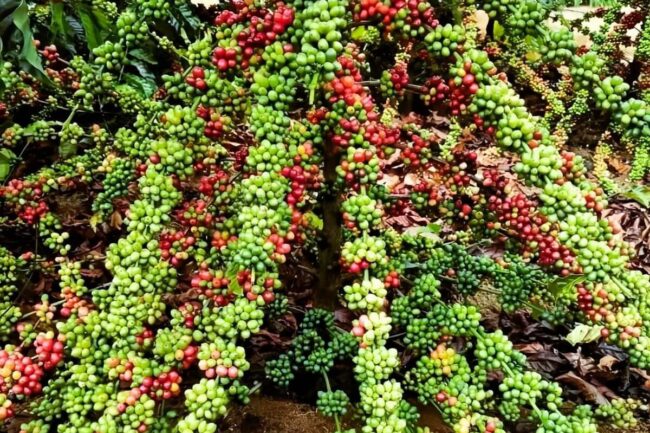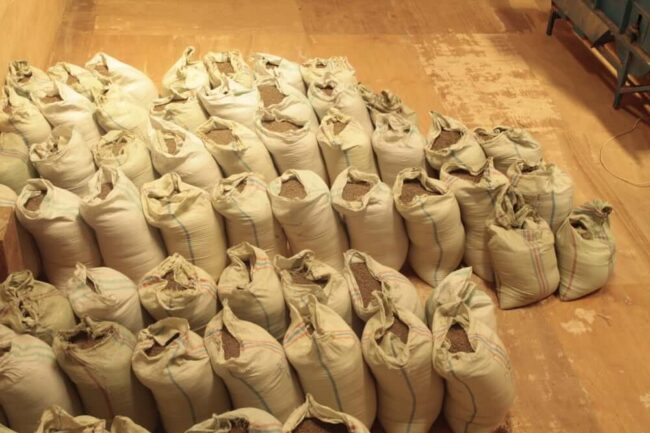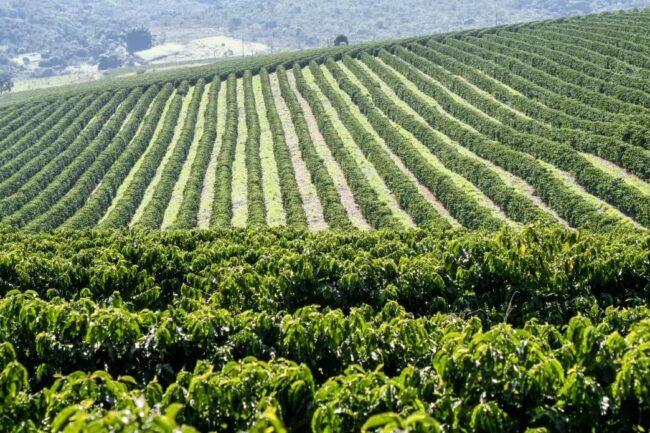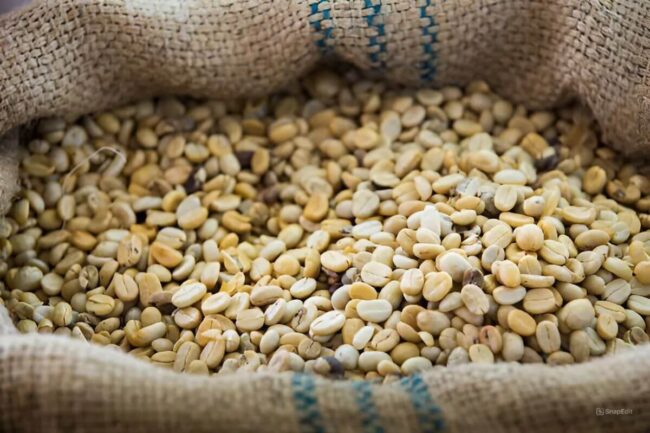September arabica coffee (KCU24) on Monday closed down -4.80 (-2.08%), and Sep ICE robusta coffee (RMU24) closed down -529 (-1.23%).
Coffee prices on Monday tumbled to 1-month lows and closed moderately lower. An increase in global coffee supplies is weighing on prices after the International Coffee Organization (ICO) reported Monday that global June coffee exports rose +3.8% y/y to 10.78 million bags, and Oct-Jun global coffee exports were up +10.1% y/y to 103.47 million bags.
Coffee harvest pressures in Brazil are also bearish for prices. Safras & Mercado reported last Friday that Brazil’s 2024/25 coffee harvest was 87% completed as of July 29, faster than 80% last year at the same time and faster than the 5-year average of 84%. Brazil is the world’s largest producer of arabica coffee beans.
Weakness in the Brazilian real (^USDBRL) is another bearish factor for coffee prices as the real dropped to a 3-1/3 year low against the dollar Monday. The weaker real encourages export selling from Brazil’s coffee producers.
A rebound in ICE coffee inventories from historically low levels is negative for prices. ICE-monitored robusta coffee inventories on July 25 rose to a 1-year high of 6,521 lots, up from the record low of 1,958 lots posted in February 2024. Also, ICE-monitored arabica coffee inventories rose to a 1-1/2 year high on June 25 of 842,434 bags, up from the 24-year low of 224,066 bags posted in November 2023.
Concerns about dry weather in Brazil are supportive of coffee prices. Somar Meteorologia reported Monday that Brazil’s Minas Gerais region received 0.4 mm of rain last week, or 5% of the historical average for the week of 8.6 mm. Minas Gerais accounts for about 30% of Brazil’s arabica crop.
Arabica coffee also has support after the Coffee Trading Academy last Monday projected Brazil’s 2024/25 coffee crop at 67.4 million bags, well below an earlier forecast of above 70 million bags.
Smaller coffee exports from Vietnam, the world’s largest robusta coffee producer, are bullish for prices. The General Department of Vietnam Customs reported on July 28 that Vietnam’s July coffee exports fell -35.7% y/y to 70,000 MT. Also, Vietnam’s Jan-July coffee exports were down -13.8% y/y at 964,000 MT.
Robusta coffee prices are underpinned by fears that excessive dryness in Vietnam will damage coffee crops and curb future global robusta production. Coffee trader Volcafe said on May 22 that Vietnam’s 2024/25 robusta coffee crop may only be 24 million bags, the lowest in 13 years, as poor rainfall in Vietnam has caused “irreversible damage” to coffee blossoms. Volcafe also projects a global robusta deficit of 4.6 million bags in 2024/25, a smaller deficit than the 9-million-bag deficit seen in 2023/24 but the fourth consecutive year of robusta bean deficits.
Vietnam’s agriculture department said on March 26 that Vietnam’s coffee production in the 2023/24 crop year would drop by -20% to 1.472 MMT, the smallest crop in four years, due to drought. Also, the Vietnam Coffee Association said that Vietnam’s 2023/24 coffee exports would drop -20% y/y to 1.336 MMT. The USDA FAS on May 31 projected that Vietnam’s robusta coffee production in the new marketing year of 2024/25 will dip slightly to 27.9 million bags from 28 million bags in the 2023/24 season.
In a bearish factor, Cecafe on July 11 reported that Brazil’s 2023/24 coffee exports rose +33% y/y to a record 47.3 million bags. Separately, the ICO said on May 3 that 2023/24 global coffee production climbed +5.8% y/y to 178 million bags due to an exceptional off-biennial crop year. ICO also said global 2023/24 coffee consumption rose +2.2% y/y to 177 million bags, resulting in a 1 million bag coffee surplus.
The USDA’s bi-annual report on June 20 was bearish for coffee prices. The USDA’s Foreign Agriculture Service (FAS) projected that world coffee production in 2024/25 will increase +4.2% y/y to 176.235 million bags, with a +4.4% increase in arabica production to 99.855 million bags and a +3.9% increase in robusta production to 76.38 million bags. The USDA’s FAS forecasts that 2024/25 ending stocks will climb by +7.7% to 25.78 million bags from 23.93 million bags in 2023/24. The USDA’s FAS projects that Brazil’s 2024/25 arabica production would climb +7.3% y/y to 48.2 mln bags due to higher yields and increased planted acreage. The USDA’s FAS also forecasts that 2024/54 coffee production in Colombia, the world’s second-largest arabica producer, will climb +1.6% y/y to 12.4 mln bags.
© Rich Asplund – Barchart




